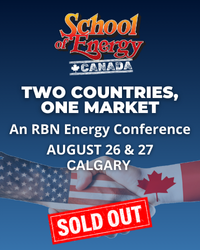The global push to decarbonize power generation, shipping and other energy-intensive sectors of the economy and the Biden administration’s efforts to heavily incentivize the development of low-carbon energy sources have resulted in a growing list of big clean ammonia projects in the U.S. Almost all of these proposed multibillion-dollar production facilities are located along the Texas-Louisiana coast, a region that offers easy access to natural gas supply, carbon sequestration sites, and export markets. In today’s RBN blog, we continue our look at the burgeoning market for “green” and (especially) “blue” ammonia with a review of the largest production facilities now under development.
As we said in Part 1, the chatter around the potential for clean ammonia to become a significant energy source is finally morphing into the reality of clean ammonia project announcements, engineering-procurement-construction (EPC) contracts and final investment decisions (FIDs). There are two primary drivers behind the shift from talk to action: (1) the supercharged tax credits for carbon capture and sequestration (CCS) in the Inflation Reduction Act (IRA) and (2) the expanding efforts by power generators in Japan and South Korea in particular to make clean ammonia an important part of their fuel mix going forward. A third impetus is growing interest by global shippers, who see clean ammonia — and the clean hydrogen packed in each molecule — as a low-carbon bunker fuel worth pursuing.
Before we delve into the big-dollar clean ammonia projects we’ve been tracking, a reminder that clean ammonia is produced by reacting either blue or green hydrogen with nitrogen (supplied from an air separation unit) using the Haber-Bosch process (a catalyst, high temperature and high pressure). Blue hydrogen is produced by running natural gas through either a steam methane reformer (SMR) or auto thermal reformer (ATR) and capturing and sequestering most of the carbon dioxide (CO2) generated by the process — typically about half of the CO2 when an SMR is used and 90%-plus with an ATR. Green hydrogen, in turn, is produced by running water through a renewables-powered electrolyzer to produce H2 and oxygen — no CO2 is produced, so there’s no need for CCS.
Join Backstage Pass to Read Full Article










